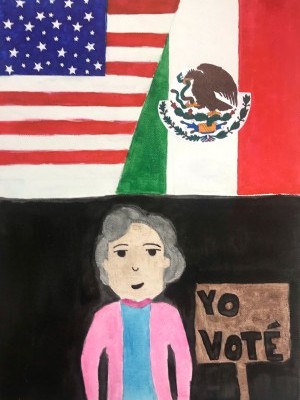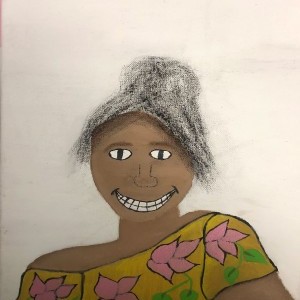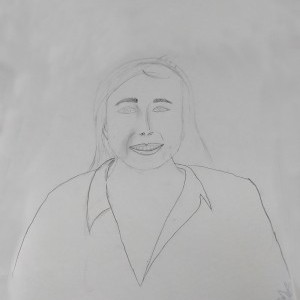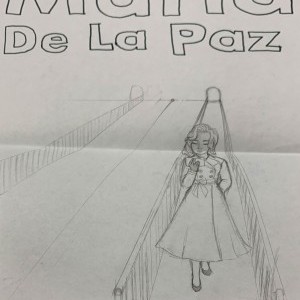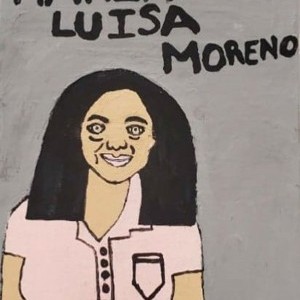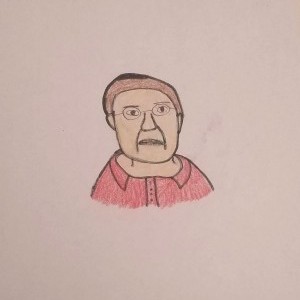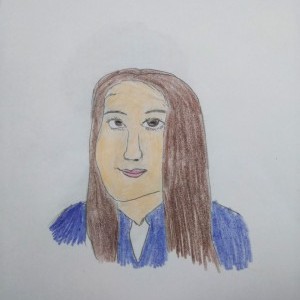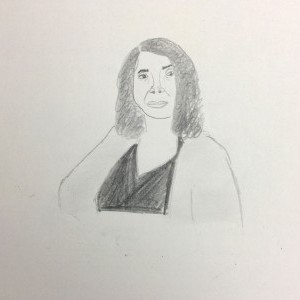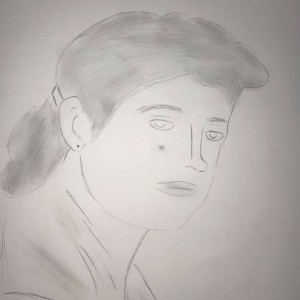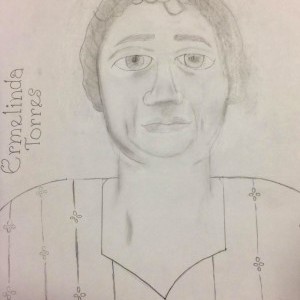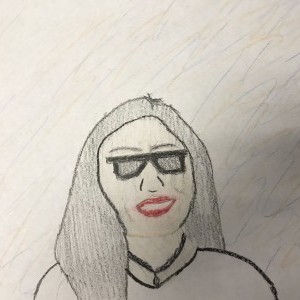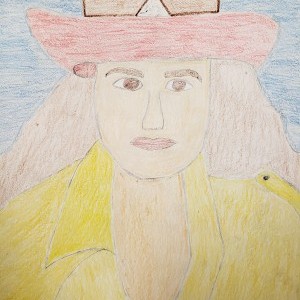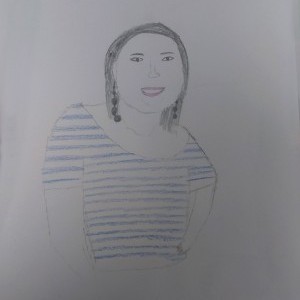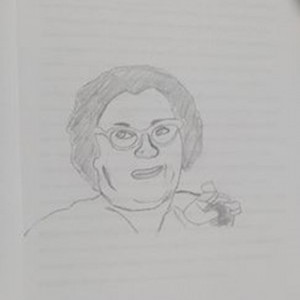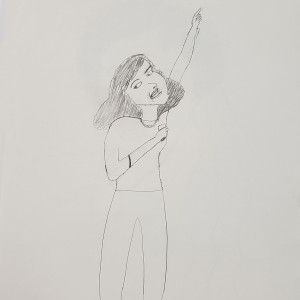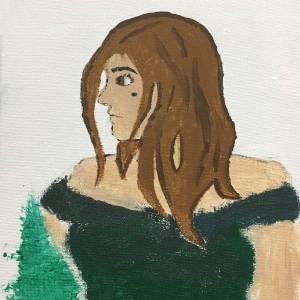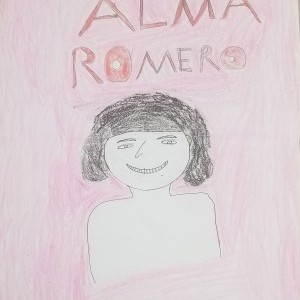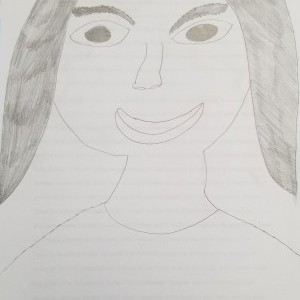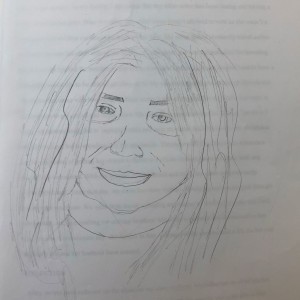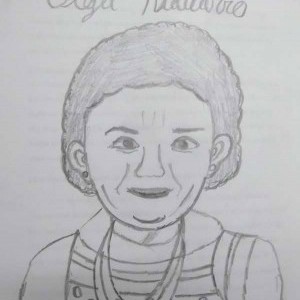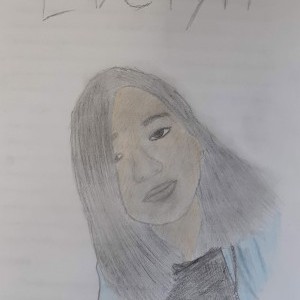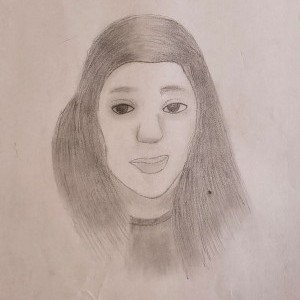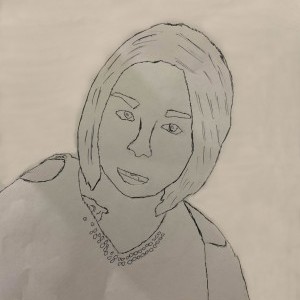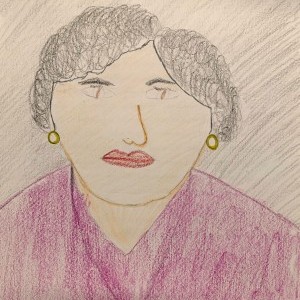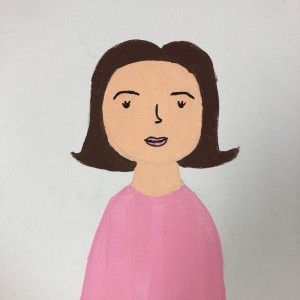Aisha Colchado
García Early College High School | Laredo, TX | 10th Grade
Inspirational Family Member
My Grandaunt
The year 2000 marks a special event in my generational family because the very first female was given the right to vote for the first time in the United States. This very inspirational woman’s name is Patricia Colchado, and regardless of her hardships and troubled young life, she was determined to better her future and create an impact all around. This woman is the sister of my grandpa from my father’s side, therefore being my second aunt.
To backtrack to the beginning, Patricia was born in Mexico, Torreón Coahuila, along with her six other brothers. It’s no surprise that Patricia felt frustrated the majority of the time, considering that she was surrounded by men. She experienced a daily struggle of injustices and unfair treatment in her household by the overload of male domination and social standards towards the differences of the sexes; regardless of this, she persevered. She eventually moved to Tamaulipas, Nuevo Laredo, at the age of fifteen and obtained a job as a waitress. Of course, the money she would earn wasn’t much, however this still gave her opportunities to experience a little bit of liberty and responsibility.
After Patricia became a young adult, she had lived through many family, economic, and financial problems. Her parents lived in poor condition, causing many arguments, and the economics of her country were low, therefore leading to poverty-stricken streets, homes, and workforces. Because she struggled in all aspects of her childhood, she promised herself that she would not live like her parents did. She knew that she wanted something more in life than just barely getting by. Patricia had it firm in her heart that she would better her future by becoming a citizen in the United States.
Soon enough, Patricia did just that. She illegally crossed over in 1985 and made a living with the scraps of money that she carried; in 1982, she decided to settle in Houston, Texas, and begin her life from there. Later, she met the love of her life and in 1989, she became a U.S citizen by marrying him. Soon after, she had kids and lived her life lavishly; she had a stable job, she lived in a happy home, and in 2000 she became the first woman in her generation to vote in the United States.
Historical Figure I Admire
Lida Gustava Heymann
March 15, 1868, marks a significant day in which a female advocate was born. Lida Gustava Heymann was a German feminist, pacifist, and women’s rights activist. Along with her partner Anita Augspurg, Lida organized many organizations in Germany, two specifically being The International Abolitionist and The Union of Progressive Women’s Associations (Verband Fortschrittlicher Frauenvereine). Lida was inspired to begin these movements by the heavy oppression that women felt under the domination of men.
Unlike many unfortunate women in Germany at the time, Lida was born into a wealthy family. After her father’s death, she used her inheritance in order to join and establish many humanitarian projects such as soup kitchens, day nurseries, women’s home, and so forth. In 1989, Lida helped Anita Augspurg and Minna Cauer establish the German branch of the International Abolitionist Federation, an organization for the decriminalization and protection of prostitutes. Soon after, she joined the Union of Progressive Women’s Associations, and in 1902 became a member of the German Union for Women’s Suffrage; this organization was recorded as the first women’s suffrage organization in Germany. As far as one can see, Lida was truly a feminist activist who joined and founded many organizations for the better future of women.
Regardless of the fact that the German Union for Women’s Suffrage was the first organization in Germany, the Social Democratic Party of Germany had advocated publicly for universal women’s suffrage. However, in 1911 the left and right wings could no longer work together due to two separate issues that they could not come into agreement with. Because of this, Lida and her partners then joined a British organization known by the name of the Women’s Social and Political Union (WSPU) under the influence of Emmeline Pankhurst. In 1913, they left the German Union for Women’s Suffrage to organize a more revolutionary corporation, thus the German Women’s Suffrage organization being born.
A crucial reason as to why Lida was able to become the active feminist that she was, was solely because of her partner Anita Augspurg; they first met at a women’s conference in 1896 in Berlin. The two became fairly close and were female advocates together. Lida and Anita became co-activists and life-partners until their death in 1943; the majority of their activities were international. To put it in perspective, in the year 1904, these ladies worked to set forth international Women Suffrage Alliances around The United States and Europe. When the First World War broke out in 1914, both of these women worked heavily to promote peace internationally. In 1915, Lida published an appeal to the women in Europe to speak out against war. All in all, Lida and Anita worked together in order to voice their opinions. They did all that they could and more to, not only try and establish equality between men and women, but demand peace against wars.
After the First World War had occurred, Lida and Anita became head of the Women’s International League for Peace and Freedom; she was vice president of this organization from 1919 all the way to 1924. Additionally, they also organized the German branch of the WILPF. Because Lida was always active in voicing her opinions and constructing organizations, she ran as an SPD candidate for the elections of the Weimar National Assembly in 1919, however, unfortunately she did not win. When the Nazis took control and gained power in 1933, Lida and Nita fled from Germany and lived in exile. They wrote down their journey in a book, however, it was not published until decades after their death in 1943.
SOURCES +
What the Project Means to Me
Personally, this was an interesting topic to write about because it required me to ask my parents about Patricia Colchado’s life story. Not only was this interesting, though, it was an eye opener and honor to finally become informed about who was the first female to vote in the United States in my family. Knowing that this woman suffered through many hardships and was more than willing to risk her life for better opportunities helped me realize how fortunate I am as a born citizen. I, as a proud feminist, will now take voting seriously and no longer take for granted what was handed to me, what others had to fight for.
Explore the Archive
More From This Class
Click on the thumbnails below to view each student's work.Deadline Extended
There's still time to join Women Leading the Way.
Become a part of our storytelling archive. Enroll your class today.
Join the Project

